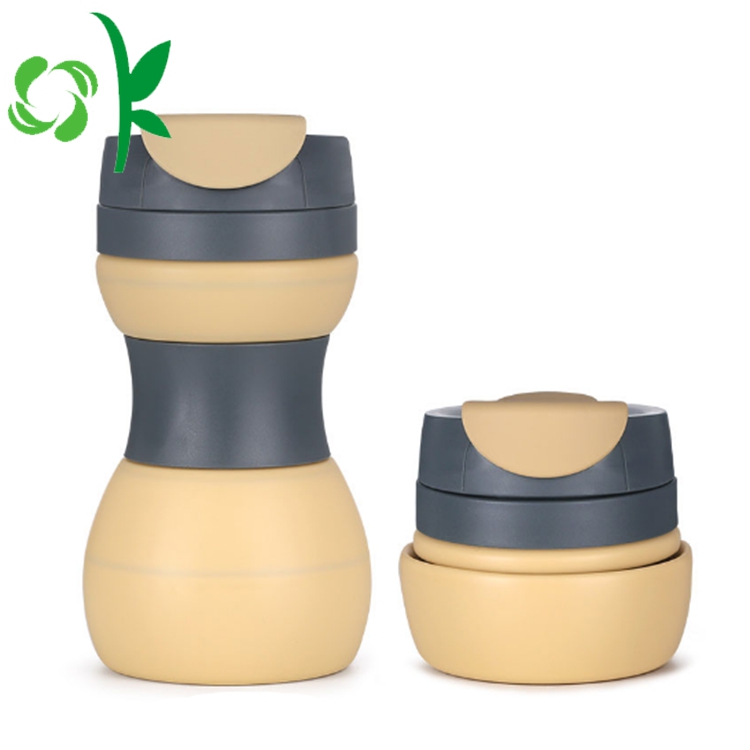Ye Xuejun
CLC number: TD925.9 Document code: A
Looking at domestic and zinc oxide lead Ore Practice [1], the majority of the ore oxidation rate of 30% to 80%, lead oxide mineral flotation is currently used mainly sulphide flotation, and the addition of zinc sulfide and oxide mineral flotation of In addition, the amine collector method is also one of the main methods. Since the use of sulfide flotation to sort zinc oxide minerals generally requires heating, the direct flotation of the amine collector method has been widely used in recent years. The difficulty in the separation of zinc oxide minerals usually comes down to the influence of slime on the oxidant minerals and the soluble salts in the ore. The intercalation of SiO 2 and lead and zinc is the main problem that seriously affects the quality of the concentrate. According to the data report [ 2 ] , the selection index of foreign zinc oxide ore, the concentrate contains 36% to 40% zinc, the recovery rate is 60% to 70%, and the highest is 78%. The average grade of zinc concentrate in China is 35% to 38%, and the individual is 40%. The recovery rate is 68% and the highest is 73%. Compared with foreign countries, the main gap in the flotation of zinc oxide minerals in China is the dosage. The deep oxidation of lead-zinc oxide ore flotation can be used for reference, which is also a major problem in this field [ 3 ] .
The lead-zinc ore studied in this paper is a poorly-lead zinc-rich refractory ore that is deeply oxidized in a certain part of Northwest China. Lead minerals are more difficult to select than zinc minerals. The experiment is aimed at the difficulty in floating the silicon-containing minerals in the lead cycle, the quality of the lead concentrate is not high, the zinc cycle is not de-sludged, and the difficulties in strengthening the dispersion of the slurry and the inhibition of the gangue are studied in detail, and the y- 2 inhibiting agent combination of silicon and zinc selected job dispersion strengthening by partial phosphate and sodium silicate in combination, the inhibition of new technology.
1. Sample properties and process plan
1.1 Sample properties
The sample is collected from the oxidized zone ore of a large dolomite lead-zinc deposit. The main useful minerals are mainly lead-lead and lead-bismuth, a small amount of lead and zinc, zinc minerals such as iron ore, magnesite, and heteropolar. Mainly mine, a small amount of sphalerite, gangue mainly composed of calcite , barite , quartz , followed by tremolite , feldspar , mica , chlorite, clay minerals and so on. The multi-element chemical analysis of the sample and the lead and zinc phase analysis results are shown in Table 1 and Table 2, respectively.
Table 1 sample multi-element chemical analysis results
element | Zn | Pb | Cu | TFe | MgO | CaO | As | SiO 2 | Al 2 O 3 |
content/% | 5.99 | 0.98 | 0.008 | 7.67 | 5.87 | 18.46 | 0.35 | 32.62 | 7.47 |
The data in Tables 1 and 2 indicate that the main problem affecting the quality of lead and zinc concentrates is the reduction of silicon. The quality of zinc concentrates will not be too good due to the participation of heteropolar ore; 41.67% of other lead in lead phase exists due to forms unclear, increasing the difficulty selected from lead, the metal recovery ratio of lead is not high; lead oxide, zinc mineral rate of 91.67% and 90.85%, is deep oxidation of lead and zinc oxide ores, respectively.
Due to the strong weathering and alteration of various factors, the ore has both colloidal deposition and recrystallization processes, resulting in the complexity of the structure and composition of the ore. Useful minerals are loose aggregates, membranes, radioactive and earthy, mineral brittle and easy to mud. Lead minerals are mainly filled along the cleavage gap of calcite and quartz fissures, and some are also embedded in the edge of limonite and are mostly inlaid with unequal particles, and a few are surrounded by gangue. Zinc minerals are mostly composed of limonite, which is composed of massive, vein-like intercalated gangue minerals. Lead-zinc minerals are medium- and fine-grained inlaid cloth. The grain size and symbiotic relationship of lead minerals are finer and more complex than zinc minerals. The order from fine to coarse is lead oxide-galena - sphalerite-zinc oxide. In the case of -0.1 mm, the dissociation degree of the lead oxide monomer was 81.47%, and that of zinc oxide was 96.27%. The gangue mineral has a coarse grain size and a high hardness.
Table 2 Results of phase analysis of lead and zinc minerals
Phase | Lead phase | Zinc phase |
Lead sulfide | Lead sulfate | Lead carbonate | Other lead | Zinc sulfide | Zinc carbonate | Zinc silicate | Other zinc |
content/% Distribution rate /% | 0.08 8.33 | 0.04 4.17 | 0.44 45.83 | 0.40 41.67 | 0.54 9.15 | 3.72 63.65 | 1.39 23.56 | 0.25 4.24 |
1.2 Process plan determination
Based on the nature of the sample, the screening of the sample, the particle size measurement of the water and the flotation test of multiple schemes are as follows: First, since the oxidation rate of lead and zinc minerals is more than 90%, the ore is easy to be muddy. Useful mineral inlays and symbiotic relationship are more complicated. The effect of particle size on sorting should be simplified as much as possible. The experiment is to ensure the fineness of grinding concentrate is -74μm72% on the premise of ensuring zinc concentrate quality and recovery rate. Second, due to the small amount of sulphide ore, it is not suitable to set up an operation separately from technical economy or post-operation management. The sulphur post-sulphur separation scheme will increase the sorting process, which is not conducive to operational control. It is advisable to use the first lead and the zinc, that is, the first choice of lead minerals and then the zinc minerals. The comparison test results show that the selection index of the lead-and-zinc solution is slightly higher than other schemes and simplifies the process structure. Thirdly, the results of particle size analysis of grinding products show that under the condition of -74μm 72%, the -19μm granular product contains 6.67% zinc, accounting for 32.33% of the zinc metal content, indicating that the degreasing is not conducive to the improvement of lead and zinc recovery rate. The test results show that the selection index of the lead-free zinc non-de-sludge principle process is higher than other schemes, and it has the advantages of simplifying the internal structure of the process and reducing the operation control link. [next]
2. Analysis of test results
The test uses XMQ240mm×90mm cone ball mill for grinding, XFD series single tank and hanging tank flotation machine for flotation, flotation reagent except collector, foaming agent, water glass for industrial use, and other analytical pure reagents. The unit sample weighs 1000g, and the grinding fineness is -74μm, accounting for 72%, which is determined by the condition test.
2.1 Lead mineral flotation test
The most common method commonly used for flotation of lead oxide minerals is the vulcanization-flotation process, in which the lead oxide mineral is pre-vulcanized and then floated with a xanthate collector. The key to this process is to create a selectively vulcanized pulp condition based on different ore properties. Because the phase composition of lead minerals in this sample is complex, the floatability is different, the brittleness is easy to be muddy, the silicon-containing minerals have good floatability, the selectivity of vulcanization is poor, and there are a large number of silicon-containing minerals when using conventional reagents as a modifier. Upward, the quality index of lead flotation is not ideal, so finding the right regulator is the key to lead oxide flotation. The research carried out extensive adjustment experiments on dispersing and inhibiting silicon-containing minerals. Based on the synergistic effect between agents [ 4 ] , a combination of inorganic salts and short-chain organic reagents was selected (code y-2). ) and got satisfactory results.
Under the same conditions under other conditions, the conditional test using the y-2 combination agent as the lead mineral coarse selection regulator and the comparison result using the conventional regulator (sodium carbonate + water glass) are shown in Fig. 1.
The results in Figure 1 show that the y-2 combination agent is superior to sodium carbonate + water glass as the modifier for oxidized negative mineral vulcanization flotation. The best point is to test the dosage of two different adjusting agents, the sodium carbonate + water glass dosage is 3600g/t, the y-2 composition dosage is 2700g/t, and the lead crude concentrate contains high lead content when using y-2 combination agent. At 2.88%, the lead recovery rate increased by 5.71%. It is indicated that the y-2 combination agent creates better conditions for selective vulcanization flotation.
Figure 1 Effect of adjusting agent dosage on lead minerals selection index
1-carbonate + water glass; 2-y-2 composition
The y-2 combination agent is further used as an inhibitor of lead selection, and the results show that it is still effective. Compared with the other two selected drug solutions, it can not only improve the quality of the concentrate, but also reduce the number of selected operations, indicating the combination. The agent does have a strong selective inhibition effect, and the silicon-reducing effect is obvious. The comparison results are shown in Table 3.
2.2 zinc mineral flotation test
The flotation of zinc oxide minerals is difficult to obtain the desired vulcanization effect at normal temperature, and the amine collector method has been widely recognized and applied. This is especially true when there are more heteropolar ore in zinc minerals, but this method is sensitive to slime, and therefore it is usually required to preliminarily demineralize or have good slurry dispersion conditions before the slurry is selected. As mentioned above, the finer the particle size of the sample, the higher the zinc-containing grade, and the -19 μm particle size accounts for 25.19% of the zinc metal. Desliming will seriously affect the zinc recovery rate, and thus the dispersion becomes zinc flotation. Prerequisites. The test firstly screened and determined the metaphosphate and water glass combination agents as inhibitors of slurry dispersion and gangue minerals. The ratio of the two was determined by factoring, and the dosage test was carried out. The test results are shown in Fig. 2. Sodium sulphide is the most commonly used activator in amine collectors. In addition to proper vulcanization, it promotes the adsorption of amine collectors by adsorption of S 2- or S - on the mineral surface. However, experimental studies have shown When the amount of sodium sulfide is too much, the pH of the slurry will be too high and affect the control of the flotation process. This study also carried out a detailed study and comparison of the four amine collectors commonly used in production practice. The data in Figure 3 shows that the capture performance of the four amine collectors is good for this sample. The order of the difference is: etheramine-mixed amine-octadecylamine-cocoamine.

Figure 2 combined reagent dosage test
Figure 3 collector comparison test
2.3 Closed circuit test results and analysis
The closed-circuit test of comprehensive conditions was carried out on the basis of condition test, factor adjustment and selected test. The test procedure and process conditions are shown in Figure 4. The test results are shown in Table 4. [next]
Separation of grinding products, closed-circuit test tailings, water particle size, grade measurement and calculation of lead-zinc metal content distribution and particle size recovery rate of each grade, the results show that the lead recovery rate is generally lower than zinc recovery. The rate is mainly lost in the final tailings. Microscopically, other lead minerals embedded in gangue and limonite are mainly found, which is the main reason for the low lead recovery rate. The fractional recovery of zinc is +74μm80.27%, -74+37μm92.56%, -19+10μm84.02%,-10μm63.27%, indicating that the process conditions determined by the test are effective for the recovery of zinc minerals. .
Table 3 lead selection scheme comparison test results / %
Inhibitor protocol | product | Yield | grade | Recovery rate | Remarks |
Pb | SiO 2 |
Al 2 (SO 4 ) 3 + water glass 200g/t | Lead concentrate Middle mine | 0.86 5.27 | 38.76 2.74 | 11.93 | 34.01 14.73 | Featured four times |
ZnSO 4 + water glass 1800g/t | Lead concentrate Middle mine | 1.00 5.15 | 35.81 2.31 | 17.47 | 36.54 12.14 | Featured four times |
Y-2 combination agent 1800g/t | Lead concentrate Middle mine | 0.76 5.46 | 44.31 2.60 | 4.83 | 34.36 14.49 | Featured three times |
Figure 4 closed circuit test process
3, the conclusion
1. The sample is a deep-oxidized lead-depleted zinc-rich refractory ore. Lead minerals are finer and more complex than zinc minerals in terms of grain size and symbiotic relationship; a considerable part of lead minerals are fine-grained by gangue or embedded. Born on the edge of limonite and difficult to cleave, there are 41.67% of other lead in the lead phase, which constitutes the intrinsic reason for the low index of lead minerals. [next]
Table 4 Comprehensive conditions closed circuit test results / %
Product name | Yield | grade | Recovery rate |
Pb | Zn | SiO 2 | Pb | Zn |
Lead concentrate Zinc concentrate Tailings Feed mine | 0.99 9.81 89.20 100.0 | 43.25 1.08 0.50 0.98 | 3.89 45.30 1.69 5.99 | 5.12 12.11 | 43.69 10.81 45.50 100.0 | 0.64 74.19 25.17 100.0 |
2. The first lead-free zinc non-desilting flotation process can adapt to the characteristics of the ore, and the process structure is simple, the links are few, and it is convenient for production and application. Directly flotation of lead minerals and zinc minerals under the condition of grinding fineness -74μm accounted for 72%, the yield was 0.99%, lead was 43.25%, zinc was 3.89%, SiO 2 was 5.12%, and lead recovery was 43.69%. The lead concentrate and the yield are 9.81%, zinc concentrate containing 45.30% zinc, 1.08% lead, 12.11% SiO 2 and zinc recovery of 74.19%.
3. The y-2 combination agent used in the lead selection operation is effective for reducing the SiO 2 content in the lead concentrate. The agent is cheap and easy to obtain, and is convenient to use. The inorganic reagent component is a commonly used reagent for flotation, and the organic group The dosage is low.
4. Since the zinc-selecting operation does not remove mud, the effective dispersion of the slurry becomes a prerequisite for the zinc-selecting operation, and the combination of the metaphosphate and the water glass determined by the screening can better satisfy this condition.
references
1. Hu Weibai, Flotation, Beijing: Metallurgical Industry Press, 1990, 20~100
2, Lei Yihan, lead and zinc dressing technology , Nanchang: Nanchang Nonferrous Design Institute Information Office, 1990, 19 ~ 22
3. Shi Daomin et al., Flotation of lead-zinc ore, Kunming: Yunnan Science and Technology Press, 1992, 29-32
4. Wang Dianzuo, Mineral Flotation and Flotation Agent, Changsha: Central South University of Technology Press, 430~433
Silicone Kitchenware
About Silicone Kitchenware
Silicone Kitchenware is one of our main products,it including Slicone Travel Folding Cup,Silicone Kitchen Utensil set,Silicone Wine Glasses,Silicone Dishwashing Gloves,Silicone Food Wrap and so on.It's made of silicone,you can use them instead of metai item in your home.It won't broken easily and you can use them safetly,because they are made of fda silicone.There are many item use for kitchen,welcome to visit our hot sale products.We will provide you good quality products.
Product introduction:
1.Product name:Silicone kitchenware,Slicone Travel Folding Cup,Silicone Kitchen Utensil set,Silicone Wine Glasses,Silicone Dishwashing Gloves,Silicone Food Wrap
2.Place of origin:Guangdong China
3.Color:any pantone color
4.Effect:Any effect according to customer's requirement
5.MOQ:500pcs.
6.Package:1 pcs/opp,customized design is available.
7.Design:Customized/stock
8.Certification:FDA,LFGB,SGS,ROHS,etc.
9.Usage:Use for kitchen using
10.Silicone Kitchenware photos for reference.





Silicone kitchenware,Slicone Travel Folding Cup,Silicone Kitchen Utensil set,Silicone Wine Glasses,Silicone Dishwashing Gloves
Dongguan OK Silicone Gift Co., Ltd. , https://www.dgsiliconepettags.com








